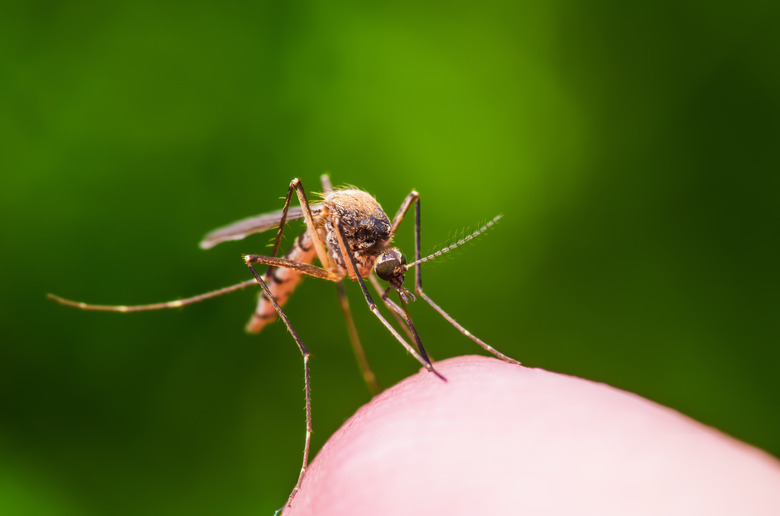The Secret To Tracking Deadly Infections? It Could Be Mosquito Pee
Mosquitoes are responsible for the spread of threatening viruses all over the world, from Zika to West Nile to yellow fever. Tracking how those diseases spread has proven complicated, expensive and labor-intensive, requiring scientists to collect mosquitoes to test directly or conduct blood tests on chickens and pigs suffering mosquito bites.
Now, those tests are becoming easier – and it's all thanks to mosquito pee.
Australian researchers reported in the Journal of Medical Entomology earlier this month that mosquito traps with urine-collecting cards successfully traced three viruses: West Nile, Ross River and Murray Valley encephalitis.
How the Mosquito Pee Test Works
How the Mosquito Pee Test Works
This research began in January 2018 with Dr. Dagmar Meyer of James Cook University in Cairns, Australia. She and her colleagues used standard overnight light traps and longer-standing traps to lure mosquitoes with carbon dioxide emissions, according to Science News. Meyer and her team set out 29 of these urine traps in two of Queensland's insect-rich areas, along with similar traps (initially introduced in 2010) to capture and test mosquito saliva.
When mosquitoes entered a urine trap, their waste dripped through its mesh floor onto a collecting card. Researchers added a moist wick of water to the trap to keep the mosquitoes alive and peeing, to improve their urine sample. In the end, these urine traps were able to trace the above-mentioned three viruses, whereas the saliva traps only traced two.
Why Pee Beats Saliva
Why Pee Beats Saliva
The urine traps proved more successful in disease tracking than the saliva traps because a virus must incubate in a mosquito for up to 15 days before it becomes detectable in its saliva, according to Infection Control Today. In mosquito waste, on the other hand, viruses become detectable after just two to three days.
Moreover, the average mosquito drools approximately 5 nanoliters of saliva while it feeds – not much at all. However, it produces about 1.5 microliters of waste liquid every time it excretes, giving researchers about 300 times as much sample material to test.
"Our study, to our knowledge, is the first to have detected arboviruses from field-collected mosquito excreta," Meyer said in her report on the study, released on April 4.
So, Is Pee Really the Key to Tracking Infections?
So, Is Pee Really the Key to Tracking Infections?
Current methods for testing for and tracking mosquito-spread diseases are costly and difficult, for the most part. Though Meyer's work remains in its early stages, it indicates the potential for easier, more accurate testing.
"Using excreta is relatively simple, potentially more cost-effective and allows for earlier and more sensitive detections of pathogen circulations compared with other methods," Meyer wrote in her report.
Researchers must conduct further field evaluations to optimize the mosquito traps and continue analysis of excreta-based tests along with saliva-based tests.
References
- Science News: Testing Mosquito Pee Could Help Track the Spread of Diseases
- Journal of Medical Entomology: Development and Field Evaluation of a System to Collect Mosquito Excreta for the Detection of Arboviruses
- Infection Control Today: Capturing Mosquito Waste Could Speed Up Virus Detection
- New Atlas: For Faster Mosquito Virus Detection, Their Waste May Be the Way to Go
- Science Daily: Capturing Mosquito Waste Could Speed Up Virus Detection
Cite This Article
MLA
Swanston, Brenna. "The Secret To Tracking Deadly Infections? It Could Be Mosquito Pee" sciencing.com, https://www.sciencing.com/the-secret-to-tracking-deadly-infections-it-could-be-mosquito-pee-13718403/. 22 April 2019.
APA
Swanston, Brenna. (2019, April 22). The Secret To Tracking Deadly Infections? It Could Be Mosquito Pee. sciencing.com. Retrieved from https://www.sciencing.com/the-secret-to-tracking-deadly-infections-it-could-be-mosquito-pee-13718403/
Chicago
Swanston, Brenna. The Secret To Tracking Deadly Infections? It Could Be Mosquito Pee last modified March 24, 2022. https://www.sciencing.com/the-secret-to-tracking-deadly-infections-it-could-be-mosquito-pee-13718403/
